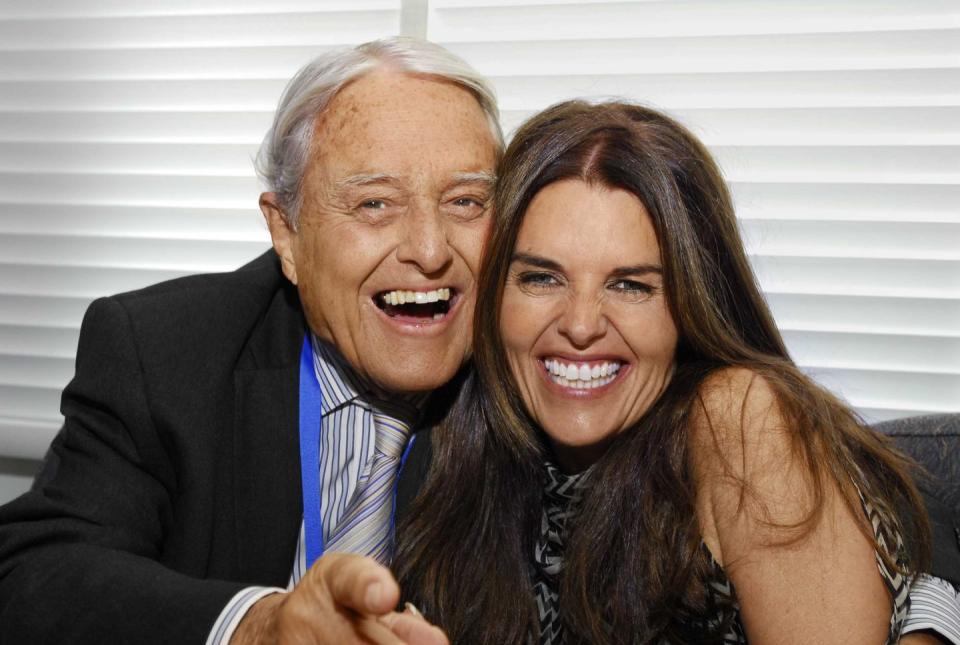After Maria Shriver’s Father Was Diagnosed With Alzheimer’s, She Went on a Quest for Answers

- Oops!Something went wrong.Please try again later.
Maria Shriver has asked a simple question—“Why?”—for as long as she can remember.
When she was in elementary school and was told she couldn’t be an altar boy like her four brothers, her response was “Well, why not?”
She asked the same question when she was told that girls couldn’t play football
or become journalists.
Join the conversation about brain health: Hear directly from top experts at You & Your Brain, a free webinar series on Tuesdays in June, hosted by Prevention, HealthyWomen, and Maria’s own organization, the Women’s Alzheimer’s Movement. Register now!
“I come from two relentless parents who not only expected their kids to do great things, but really demanded it of us,” says Shriver. “As a result, I’ve always wondered why things are the way they are—and challenged people’s assumptions and judgments when they just didn’t make sense.”
This drive for answers (mixed with a hefty dose of “I’ll-show-you!” attitude) led Shriver to a career in journalism, which meant she could turn her curiosity into a profession. When her beloved father was diagnosed with Alzheimer’s disease in 2003, Shriver’s quest for answers got even more personal.
“I couldn’t understand how this man with the smartest brain I knew was suddenly pointing to my face asking, ‘What’s that thing in the middle there?’” says Shriver. “To go from being a diplomat and founding the Peace Corps to not knowing what a nose is? I was like, ‘Damn, why is nobody talking about this?’”

Shriver set out to change that. In 2004 she wrote a best-selling children’s book, What’s Happening to Grandpa?, to explain Alzheimer’s to kids. Five years later, she produced an HBO special called The Alzheimer’s Project and testified before Congress, urging members to invest more money in finding drugs to prevent and treat Alzheimer’s. And as she spoke to more doctors and researchers about the disease, she began noticing an alarming issue: Women were bearing the brunt of Alzheimer’s, both as people with the disease and as caregivers.
“Two-thirds of people diagnosed with Alzheimer’s are women, and two-thirds of the caregivers for those patients are also women,” says Shriver. “I wanted to understand why the majority of cases were happening to us.”
Shriver was concerned that the experts couldn’t answer this question, and she got frustrated when they chalked it up to women’s living longer. “I wanted to understand why—what was different about women’s brains?” she says.
To get answers, Shriver founded the Women’s Alzheimer’s Movement (WAM), an organization that funds research, tries to prepare women and their families for the impact of Alzheimer’s, and educates people on what we all can do to prevent this devastating disease.
Thankfully, Shriver is starting to get some answers that are giving her reason to hope. More gender-specific research is being done than ever before, and there’s a new awareness of the effect Alzheimer’s has on the millions of women caregivers. And while understanding the sex differences in the brain that prompt Alzheimer’s to impact women so greatly is Shriver’s main focus, it’s part of a bigger mission.
“The more I try to understand Alzheimer’s, the more I realize we don’t know as much as we should about women’s health in general,” she says. “I have two daughters and a granddaughter, and I don’t want them to go to a doctor when they’re my age and hear what I do when I ask for answers, which is ‘We don’t know.’
“I’m hopeful that the answers they get will be different. And I hope that I’ll have been helpful in getting them those answers.”
This article originally appeared in the June 2021 issue of Prevention.
You Might Also Like

